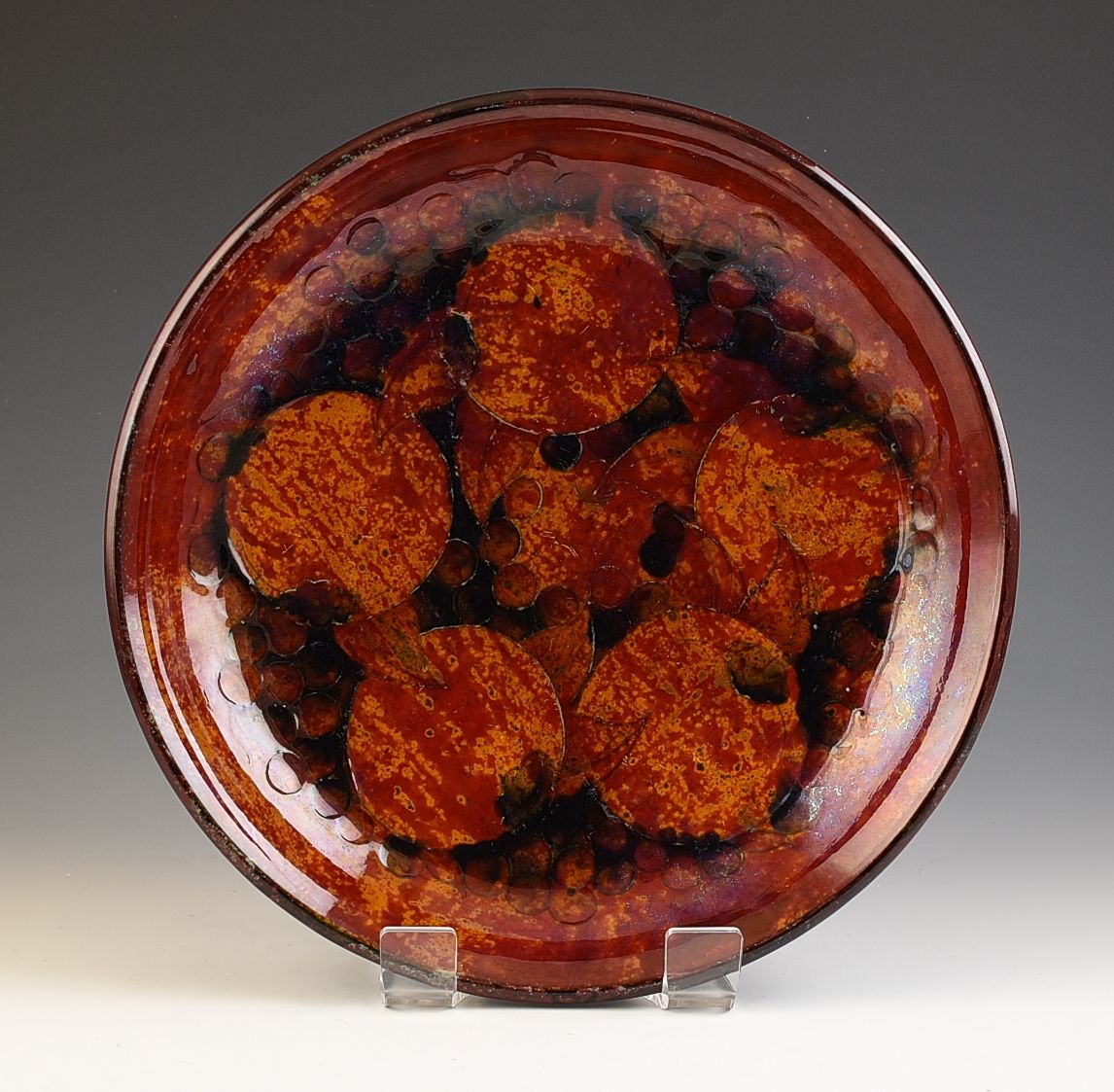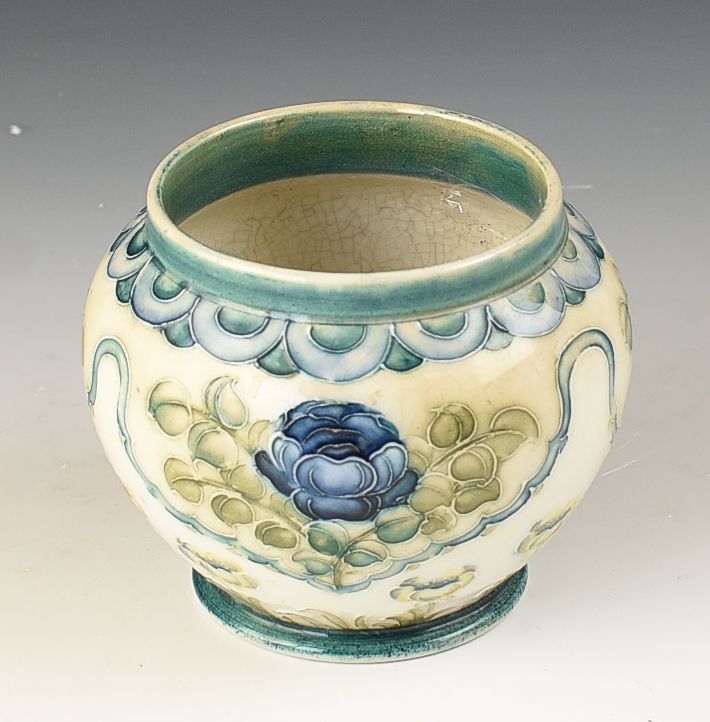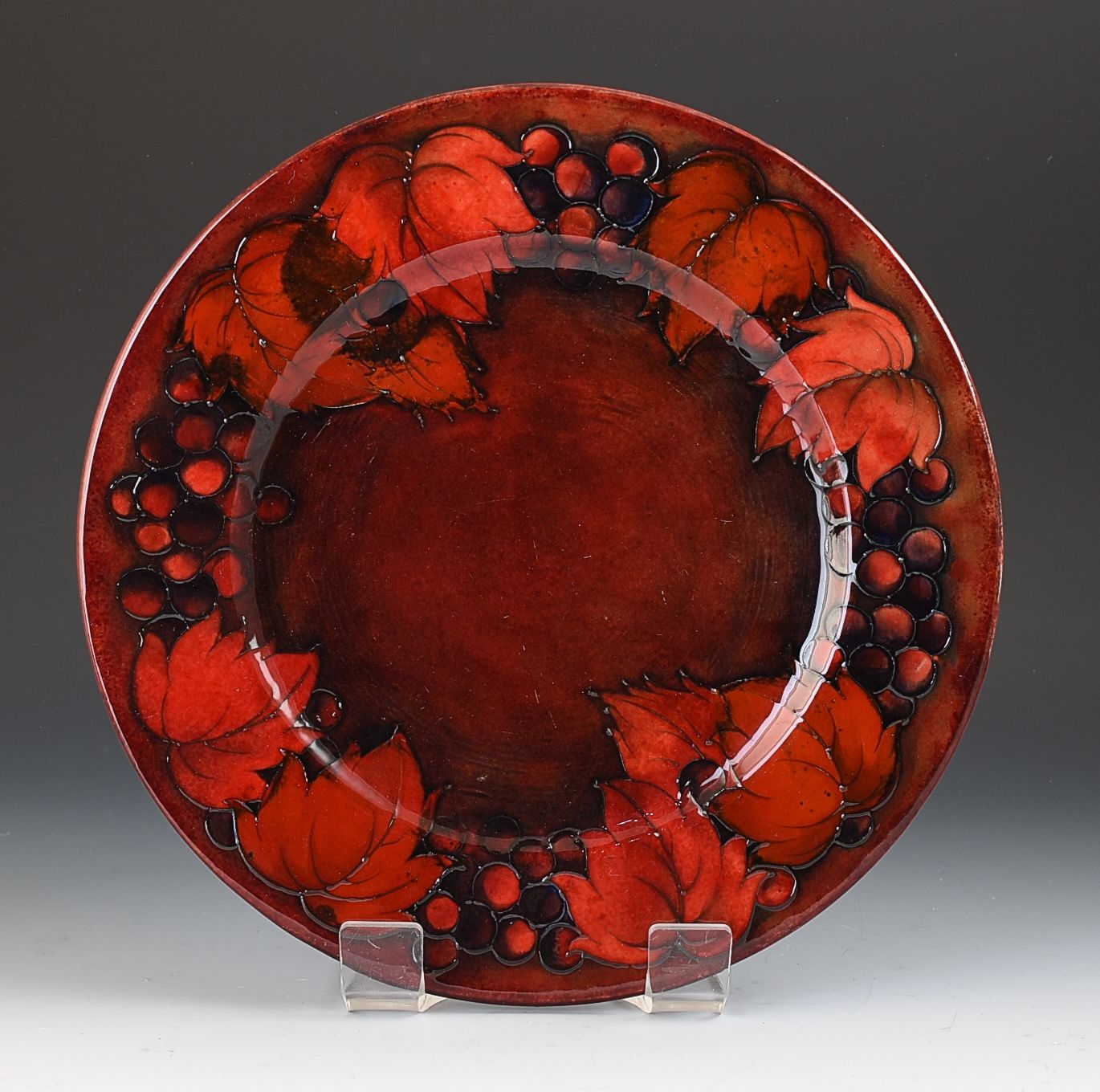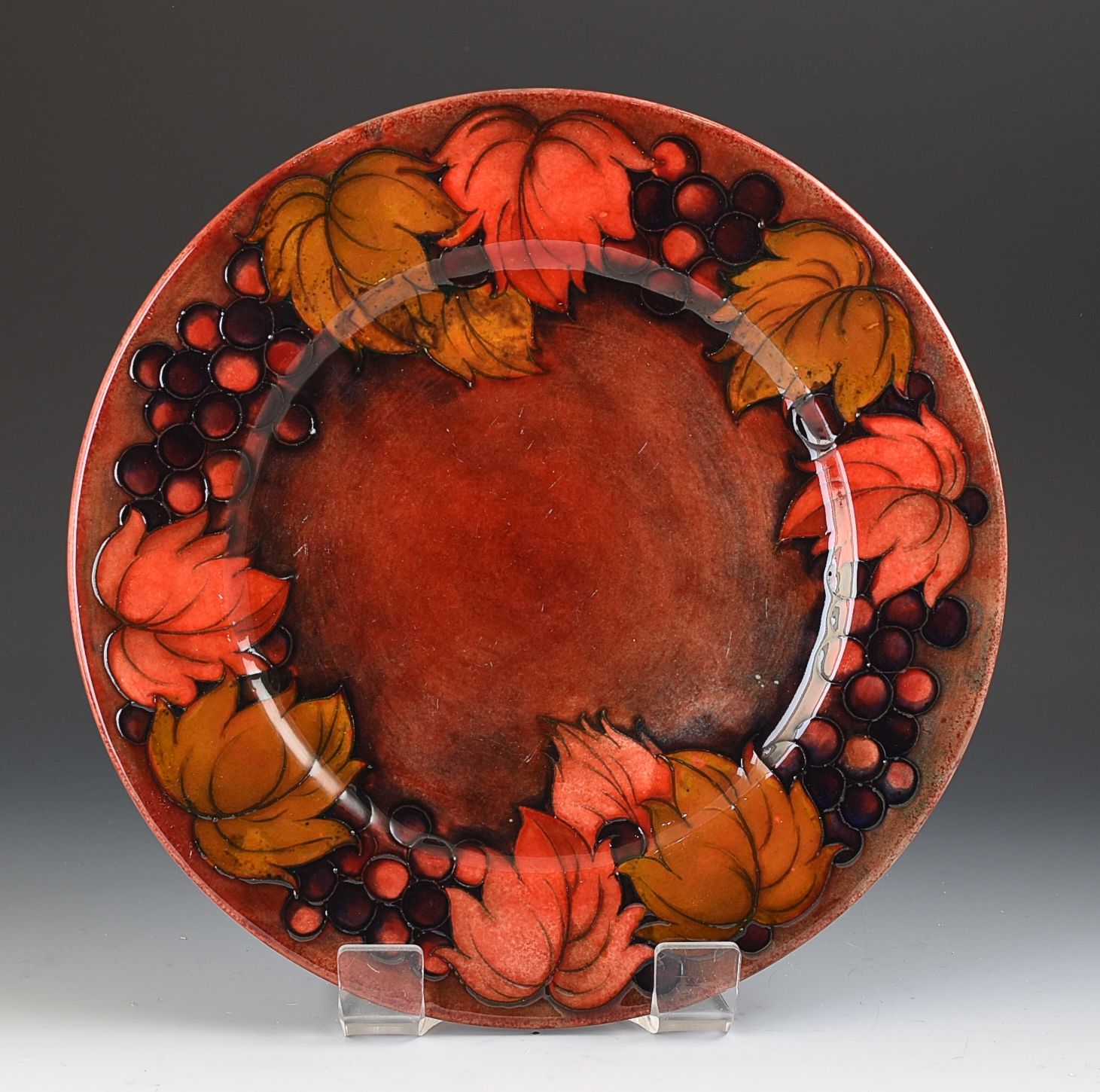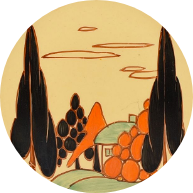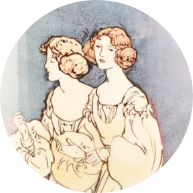William Moorcroft history
The English potter William Moorcroft (1872-1945) founded the Moorcroft pottery business and developed a formidable reputation as a designer with his work featured in high-end china stores worldwide including Liberty & Co and Tiffany’s.
Moorcroft pieces of interest
Today, Moorcroft Pottery uses propriety glazes and distinctive slip-trailing methods pioneered by William Moorcroft at the day of the 19th century. Today, Moorcroft pottery is one of the last remaining independent art potteries in the world and still operates out of the original brick factory in Stoke-on-Trent, England.
Early years
Born in Burslem, Staffordshire, he studied art at Burslem then in London and Paris, then around 1896, he experimented with his own pottery designs working for James Macintyre & Co. Moorcroft produced Aurelian Ware, which he partly decorated with transfers and partly painted by hand. He developed highly lustred glazes and used oriental shapes and decorations. By the age of 24, Moorcroft and his pottery began making its mark in the world of British ceramics.
Unique aesthetics
Moorcroft developed his famous Florian Ware, with heavy slip and translucent glaze to produce brilliance of colour and he personalised each piece of pottery produced with his own signature or initials. At the time, some of Moorcroft’s techniques became closely guarded secrets. In 1904 Moorcroft won a gold medal at the St Louis International Exhibition and gold at the Brussels Exhibition, followed by further accolades, medals and commendations. By 1913 an inevitable split occurred with Moorcroft from James McIntyre’s name and reputation. He set up his own factory at Cobridge with staff from the McIntyre pottery studio – and the factory in Sandbach Road is still where Moorcroft pottery is made today.

Highest accolades
Backed by a joint financial arrangement with the famous stores Liberty & Co, in London, Moorcroft’s factory succeeded with much of the production output sold through the the famous London store and Tiffany’s in New York. The arrangement with Liberty continued to impact and control the Moorcroft business until early 60s. Yet the highest accolade came in 1928, when sought after Moorcroft was appointed Potter to HM The Queen with his company being awarded the prestigious Royal Warrant and stamp on the pottery. In the 30s more accolades were won with Moorcroft scooping the Grand Prix award at the Antwerp International Exhibition and a diploma of honour at the Milan Fair. The V&A hold a Moorcroft exhibition touring the UK.
Personal life
William Moorcroft marries Florence Lovibond in 1913 and they move to Glendale in Trentham and by July the following year, their daughter Beatrice was born and four years later the couple had a son, Walter. But by 1926, his wife dies of pneumonia. Nine years later, Walter finishes school and works at the Moorcroft pottery. When his father dies in 1945, he takes over the reigns of the business. Before Walter retires in the late 80s, he designs five limited editions: Pineapple Plant, Chestnut, Tulip, Maize and Wild Arum. He was awarded an OBE in 1999.
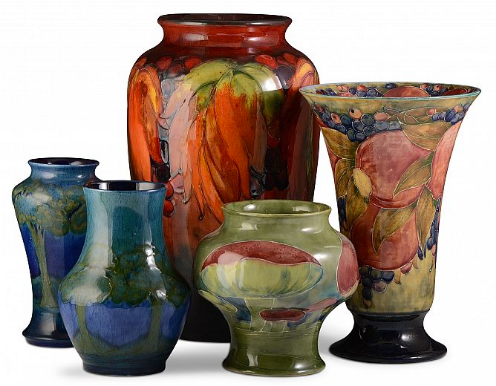
Moorcroft pottery legacy
On Moorcroft’s death in 1945, his elder son, Walter, took over management and design. By 1962, the Moorcroft family bought out Liberty, but the business struggled to prosper and in 1984, the family sold the bulk of their shares on the open market. By 1987 the Moorcroft Collectors club launches and since the early 90s, Moorcroft has been controlled by the Edwards family. In 1997 the year of the Moorcroft centenary, the Moorcroft Design Studio was formed with the hugely talented Rachel Bishop, the fourth only designer to join Moorcroft at the helm, leading the innovative team of eight designers. Today, Moorcroft pottery is sought over all over the world, and every year the auctioneers, Christies hold a dedicated Moorcroft sale.
